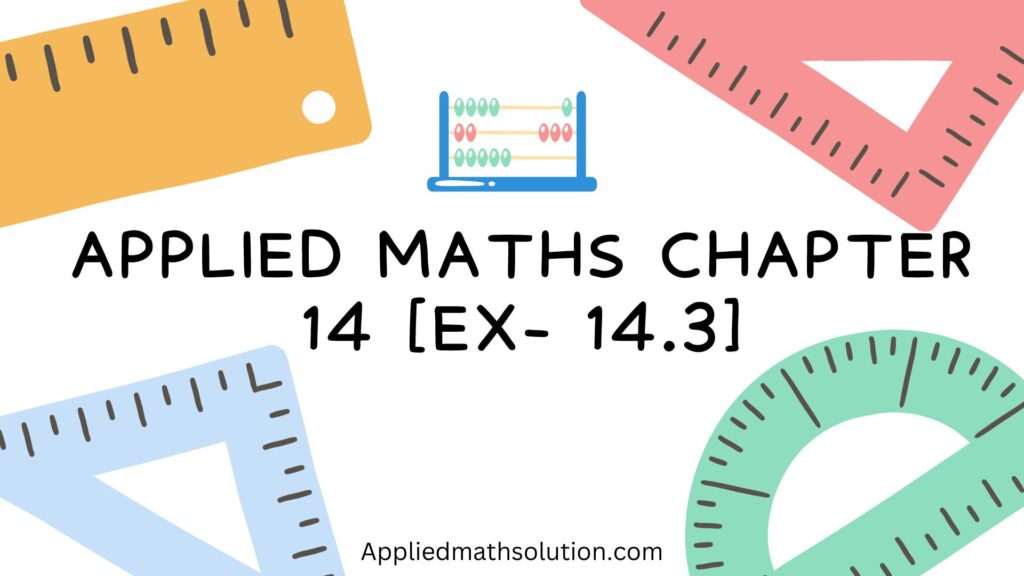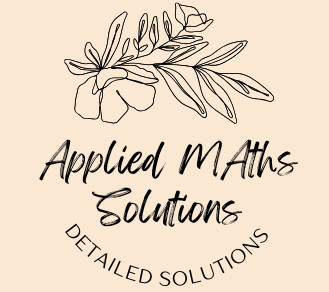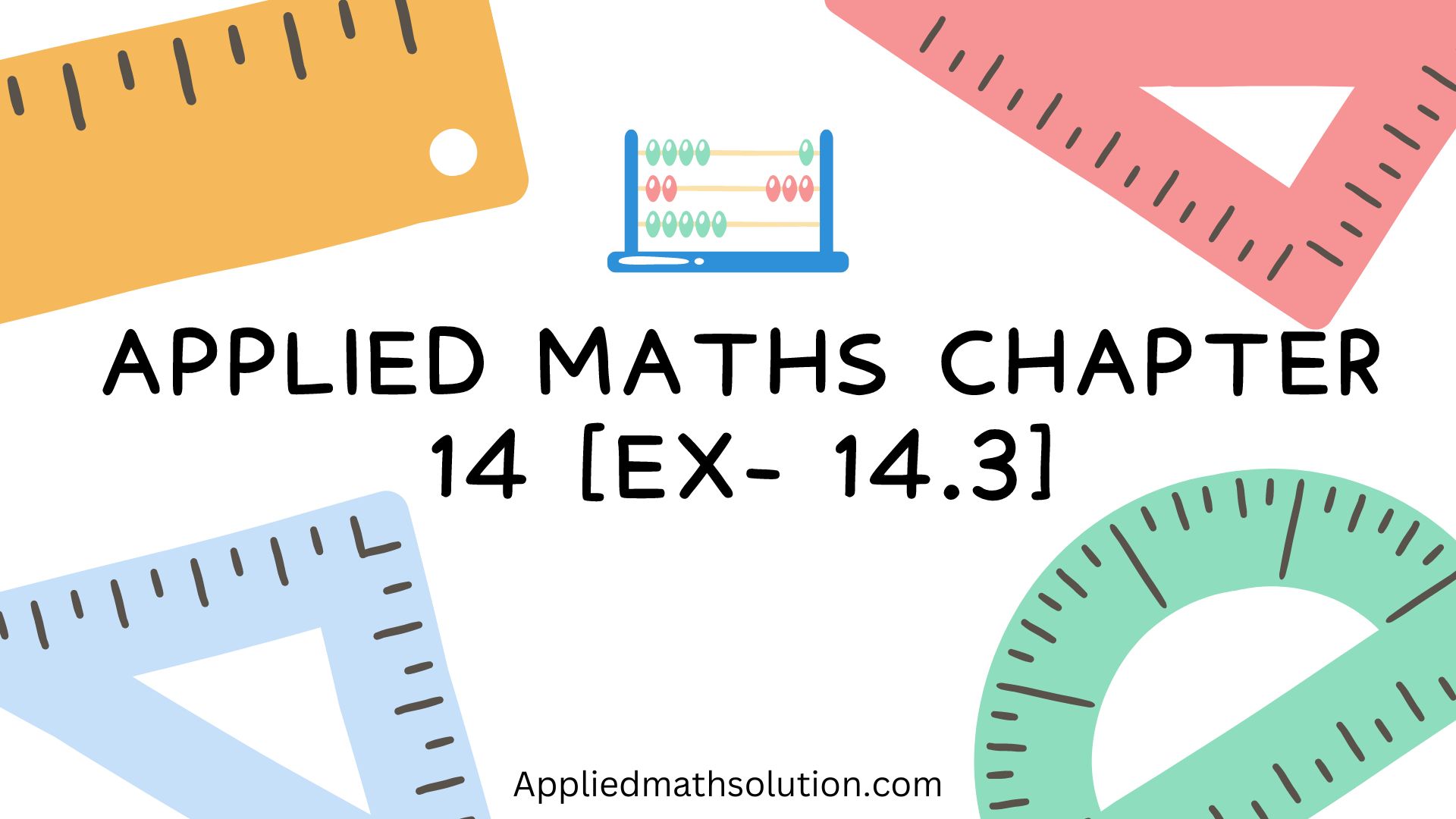Welcome to Class 11 Applied Maths Chapter 14, where we embark on an exciting journey into the world of advanced mathematical concepts tailored for Class 11 students.” Unlock the power of applied mathematics with expert solutions crafted by professionals at AppliedMath.com. Designed to propel students towards academic success, our meticulously curated ML Aggarwal Solutions for Applied Mathematics cater to Class 11 and class 12 students seeking mastery in their examinations. Every query from the CBSE ML Aggarwal Books finds a comprehensive answer on our platform, complete with detailed explanations and step-by-step solutions presented in an easily understandable language.
Dive into the world of applied mathematics and discover how our resources can elevate your understanding and performance. Keep reading to explore the wealth of ML Aggarwal Solutions for Class 11 and Class 12 Applied Mathematics.
Here we provide you with Class 11 Applied Maths Chapter 14, to help you gain a comprehensive understanding of the chapter and its concepts.
https://appliedmathsolution.com/

Class 11 Applied Maths Chapter 14 Solutions
Compound Interest And Annuity
EXERCISE – 14.3
Q.1 Find (using log tables) the amount of an annuity of Rs.800 payable at the end of each year for 3 years, if money is worth 8% per annum compounded annually.
Ans. R = Rs.800, n = 3, i = 8% = 0.08
A = R []
= [(1.08)3 – 1]
= 10000 (1.260 – 1]
= 10000 x 0.26
= Rs.2600
Q.2 Find (using annuity tables) the amount of an annuity of Rs.2000 payable at the end of every 6 months for 2 years if money is worth 10% per annum compounded semi-annually.
Ans. R = Rs.2000, n = 2 x 2 = 4, i = i = = 5
A = R x Sñ/i
= 2000 x S4/0.05
= 2000 x 4.3101
= 8620.2000
= Rs.8620.20
Q.3 Find the amount of an annuity of Rs.1500 payable at the end of every 3 months for 1 year, if money is worth 12% per annum compounded quarterly. (Given (1.03)^4 = 1.1255)
Ans. R = Rs.1500, n = 1 x 4 = 4, i = = 3
A = R []
= [(1.03)4 – 1]
= 50000 (1.1255 – 1]
= 50000 x 0.1255
= Rs.6275
Q.4 What sum of money must be deposited in a bank at the end of each year for 3 years to get Rs.10000 at the end of 5 years, if the bank pays interest 8% per annum compounded annually? (Use annuity tables)
Ans. R = ?, n = 3, i = 8%
A = R []
Amount for first 3 years = R []
= R []
For next 2 years,
A = Rs. R []
A = Rs.10000, n = 2, r = 8%
Using, A = P (1 + i)n
1000 = R []
800 = R (1.260 – 1) (1.1663)
800 = R (0.260) (1.1663)
R =
=
= Rs.2638
Q.5 Find (using annuity tables) the present value of an annuity of Rs.5000 payable at the end of each year for 4 years, if money is worth 8% per annum compounded annually.
Ans. R = Rs.5000, n = 4, i = 8%
A = R x añ/i
= 5000 x a4/0.08
= 5000 x 3.3121
= 16560.5000
= Rs.16560.50
Q.6 Find the present value of an annuity of Rs.2500 payable at the end of every 6 months for 1 years, if money is worth 12% per annum compounded annually.
Ans. R = Rs.2500, n = 1 x 3 = 3, r =
= 6%
P = R[]
= 2500 []
= (1 – (1.06)3)
= (1 – 0.8397)
= x 0.1603
=
= Rs.6679.16
Q.7 Find the present value of an annuity of Rs.8000 payable at the end of every 3 months for 3/4 years, if money is worth 8% per annum compounded quarterly. (Given (1.02)^-3= 0.9423)
Ans. R = Rs.8000, n = x 4 = 3, i =
= 2%
P = R[]
= 8000 []
= (1 – (1.02)3)
= 400000 (1 – 0.9423)
= 400000 x 0.0577
= Rs.23080
Q.8 Mr. Rohit purchased a mobile phone paying Rs.5000 cash down and promised to pay Rs.1500 at the end of every 3 months for the next one year. If the shopkeeper charges 12% interest per annum compounded quarterly, find the cash price of the mobile phone. (Use annuity tables)
Ans. P = R []
= 1500 []
= (1 – 0.89)
= 50000 (1 – 0.89)
= 50000 x 0.11
= Rs.5500
Cost of Machine = Cash down paymemt + PV of annuity
= 5000 + 5500
= Rs.10500
Q.9 Calculate the net present value of a project which requires an initial investment of Rs.200000 and it is expected to generate a net cash inflow of ₹ 80000 every 6 months for 2 years. Assume that the salvage value of the project is zero and the discount rate is 12% per annum.
Ans. R = Rs.80000, n = 2 x 2 = 4, i = = 6%
P = R[]
= 80000 []
= (1 – 0.7921)
=
= Rs.277200
Net P.V = 277200 – 200000
= Rs.77200
Q.10 For installation of a new machine an investment of Rs.700000 is required which is expected to generate net cash inflows of Rs.240000, Rs.300000, and Rs.325000 at the end of the first, second, and third year respectively. At the end of 3 years the machinery can be sold for Rs.150000. Calculate the net present value of the investment, if the discount is 18%.
(Given (1.18)^-1=0.8475. (1.18)^-2 = 0.7182. (1.18)^-3=0.6086)
Ans. Present value of cash inflow for 1st year =
=
= Rs.203389.83
Present value of cash inflow for 2nd year =
= Rs.215455.33
Present value of cash inflow for 3rd year =
= Rs.197805.0
Salvage Value =
= Rs.91294.6
Total P.V of cash inflow = 1 + 2 + 3 + S.V
= 707945
P.V of cash outflow = 700000.00
Net P.V = 707945 – 700000.00
= Rs.7945
FAQ’s related to Applied Maths Chapter 14 on compound interest and annuity:
Q.1 What is compound interest, and how does it differ from simple interest?
Ans. Compound interest is the interest calculated on the initial principal and also on the accumulated interest from previous periods. Unlike simple interest, which is calculated only on the principal amount, compound interest takes into account the interest earned over time, resulting in exponential growth of the investment.
Q.2 What are some common mistakes to avoid when solving compound interest and annuity problems?
Ans. Common mistakes include misinterpreting the problem statement, using incorrect formulas, neglecting to convert interest rates to decimal form, and misunderstanding the frequency of compounding or payment periods. It’s essential to carefully read the problem and double-check calculations for accuracy.
Q.3 How do I calculate compound interest for a given principal, interest rate, and time period?
Ans. The formula to calculate compound interest is A = P(1 + r/n)^(nt), where A is the future value, P is the principal amount, r is the annual interest rate (in decimal form), n is the number of times interest is compounded per year, and t is the time in years.
These are few Frequently Asked Questions relating to Class 11 Applied Maths Chapter 14
In Class 11 Applied Maths chapter 14, you will explore fascinating topics that form the backbone of practical problem-solving techniques. Through clear explanations, illustrative examples, and step-by-step solutions, you’ll grasp complex concepts effortlessly. Whether you’re preparing for exams or simply eager to deepen your mathematical understanding, Class 11 Applied Maths Chapter 14 promises an enriching learning experience that will set you on the path to success. Class 11 Applied Maths Chapter 14, we delve deep into advanced mathematical concepts that are crucial for understanding.


